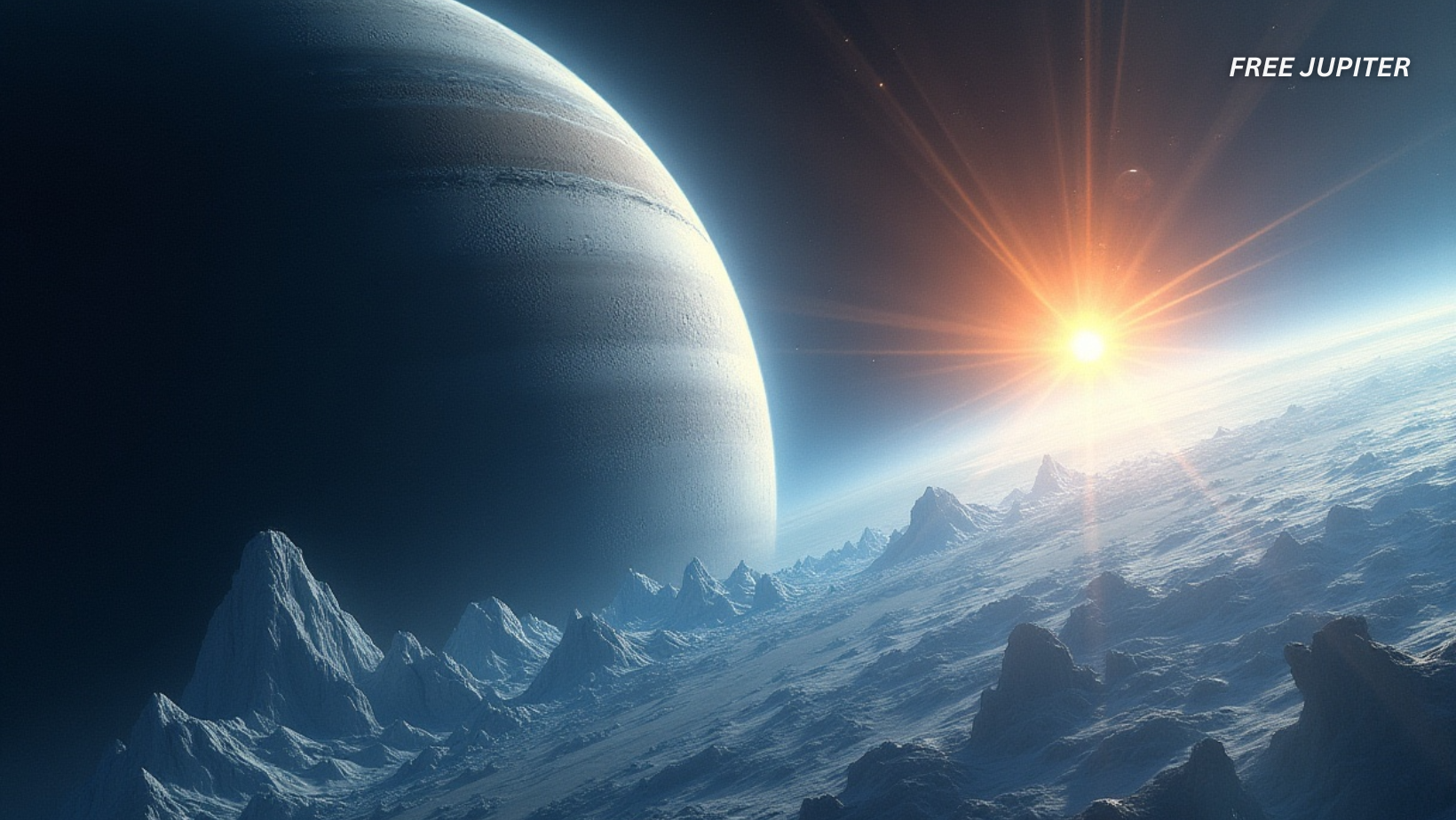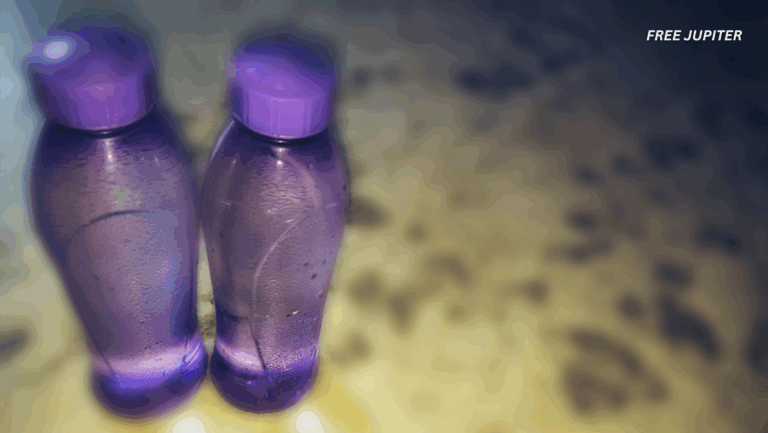Friendly Note: FreeJupiter.com shares general info for curious minds 🌟 Please fact-check all claims—and always check health matters with a professional 💙
The recent announcement of a massive planet orbiting the diminutive star TOI-6894 has sent ripples of excitement and bewilderment through the astronomical community. This unusual pairing defies conventional wisdom about planetary formation and the types of stars that can host giant planets. In this expanded article, we delve deeper into the details of this groundbreaking discovery, exploring its implications for our understanding of exoplanets, planetary formation theories, and the potential for discovering even more exotic systems in the vast expanse of the Milky Way.
Unveiling the Odd Couple: TOI-6894 and Its Gas Giant Companion
TOI-6894, the host star, is a red dwarf, the most common type of star found in our galaxy. Red dwarfs are significantly smaller and cooler than our Sun, typically possessing between 7.5% to 50% of the Sun’s mass. They are also much fainter, emitting far less light and heat. Due to their small size and low luminosity, red dwarfs have extremely long lifespans, potentially burning for trillions of years.
The planet orbiting TOI-6894 is a gas giant, a class of planet similar to Jupiter and Saturn in our own solar system. These planets are primarily composed of hydrogen and helium, with relatively small rocky cores. Gas giants are typically massive, with strong gravitational fields that allow them to retain thick atmospheres. The planet orbiting TOI-6894 is slightly larger in radius than Saturn but possesses only half its mass, indicating a lower overall density. This suggests a unique atmospheric composition or internal structure, perhaps with a larger proportion of lighter elements or a less compressed core.
The planet’s orbital period is a mere three days, placing it incredibly close to its host star. Such close proximity results in extreme tidal forces and intense radiation from the star, creating a harsh environment unlike anything found in our solar system. The planet is likely tidally locked, meaning one side always faces the star while the other remains in perpetual darkness. This configuration can lead to dramatic temperature differences between the two hemispheres and potentially create strong winds and unusual atmospheric phenomena.
Read more: For the First Time Ever, Scientists Discover Water Surrounding a Star Like Our Own
The Discovery Process: A Triumph of Modern Astronomy
The discovery of this unusual planetary system was made possible by the combined efforts of space-based observatories and ground-based telescopes. NASA’s Transiting Exoplanet Survey Satellite (TESS) played a crucial role in identifying potential exoplanets. TESS surveys large swaths of the sky, monitoring the brightness of millions of stars. When a planet passes in front of its star, it blocks a tiny fraction of the star’s light, causing a slight dip in brightness. These transit events are detected by TESS, providing initial candidates for exoplanets.
However, transit signals can sometimes be caused by other phenomena, such as binary stars or stellar activity. To confirm the existence of an exoplanet, astronomers rely on follow-up observations from ground-based telescopes. The Very Large Telescope (VLT) in Chile, operated by the European Southern Observatory (ESO), was used to measure the radial velocity of TOI-6894. The radial velocity method detects the subtle wobble in a star’s motion caused by the gravitational pull of an orbiting planet. By combining transit data from TESS with radial velocity measurements from VLT, astronomers were able to confirm the existence of the gas giant planet orbiting TOI-6894 and determine its mass and orbital period.
Challenges to Planet Formation Theories
The existence of a massive planet orbiting such a small star presents a significant challenge to our current understanding of planet formation. The most widely accepted theory, the core accretion model, posits that planets form within protoplanetary disks, swirling clouds of gas and dust that surround young stars. Within these disks, dust grains collide and stick together, gradually forming larger and larger bodies. Eventually, these bodies can grow into planetary cores, which then attract gas from the surrounding disk to form gas giants.
However, red dwarfs have relatively small protoplanetary disks, with less material available for planet formation. They also emit less radiation, which can slow down the accretion process. According to the core accretion model, it should be difficult, if not impossible, for red dwarfs to form gas giants. The discovery of the planet orbiting TOI-6894 suggests that either our understanding of planet formation around red dwarfs is incomplete or that alternative mechanisms may be at play.
One possibility is that the planet formed farther away from the star, where more material was available, and then migrated inward over time. Planetary migration can occur due to interactions with the protoplanetary disk or with other planets in the system. However, the conditions for such migration to occur are not always present, and it is unclear whether this scenario is plausible for TOI-6894.
Another possibility is that the planet formed through a different mechanism altogether, such as gravitational instability. This process involves the direct collapse of a dense clump of gas within the protoplanetary disk, bypassing the need for a solid core. However, gravitational instability is thought to be more likely to occur in massive protoplanetary disks around larger stars.
Implications for Exoplanet Research
The discovery of a gas giant orbiting TOI-6894 has significant implications for exoplanet research. It suggests that giant planets may be more common around red dwarfs than previously thought. Since red dwarfs are the most abundant type of star in the Milky Way, this could mean that there are many more giant planets in our galaxy than we previously estimated.
This discovery also highlights the importance of continuing to search for exoplanets around a wide variety of stars. By studying diverse planetary systems, we can test our theories of planet formation and gain a better understanding of the conditions that lead to the formation of different types of planets.
Furthermore, the discovery of unusual planetary systems like TOI-6894 can help us better understand the potential for habitability on other planets. While the gas giant orbiting TOI-6894 is unlikely to be habitable itself, its presence could influence the orbits and environments of other planets in the system. It is possible that smaller, rocky planets could exist in the habitable zone of TOI-6894, where liquid water could exist on their surfaces.
Read more: The Strawberry Moon May Be the Most Potent And Powerful Full Moon of the Year
Future Research and Exploration
The discovery of the planet orbiting TOI-6894 is just the beginning. Further observations and research are needed to fully understand this unusual planetary system. Astronomers will likely use more powerful telescopes, such as the James Webb Space Telescope, to study the planet’s atmosphere and search for signs of water or other molecules. They may also search for other planets in the system, looking for smaller, rocky planets that could be potentially habitable.
In addition, theoretical studies are needed to refine our models of planet formation and explore alternative mechanisms that could explain the existence of the gas giant orbiting TOI-6894. These studies will help us better understand the diversity of planetary systems in our galaxy and the potential for finding life beyond Earth.
The discovery of a massive planet orbiting a tiny star serves as a powerful reminder of the vastness and complexity of the universe. It challenges our assumptions, inspires new research, and reinforces the importance of continued exploration and discovery. As we continue to probe the mysteries of exoplanets, we can expect to find many more surprises that will further revolutionize our understanding of the cosmos.










